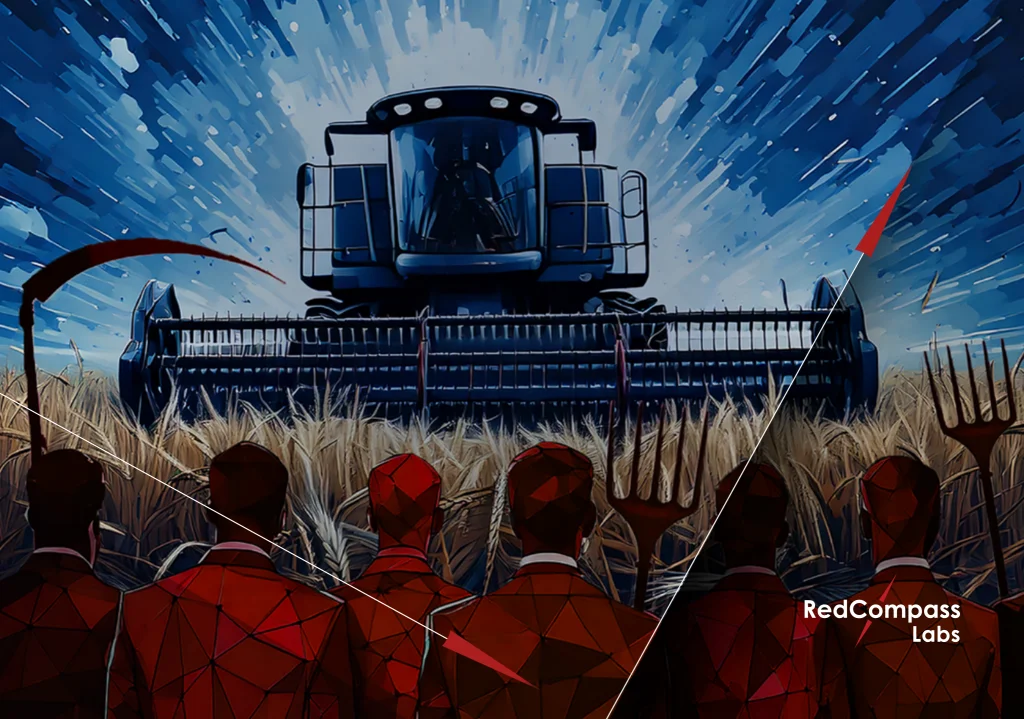Our industry proved it can respond quickly, efficiently and empathetically to the immediate business continuity needs imposed by COVID-19.
But we all know that we will never go back to “normal”. So, rather than resting on our laurels, business leaders should seize the moment to position themselves for the future by making speed of response and agility the new normal.
Business Model Strategy Evolution: Prepare for the future
At RedCompass Labs, we often see our clients battling with business model challenges that come between them and their strategic goals. Aspects like legal entity Integration, offshoring and nearshoring, Operational Resilience implementation or implementing cost and resource-efficient Target Operating Models are significant challenges in their own right. These challenges need to be addressed while keeping a close eye on maintaining regulatory compliance.
The key, though, is to look beyond the immediate need. The pandemic, and to some extent Brexit, are the perfect trigger events to rethink your business model, and reposition your organisation for the “new normal”. Of course, there is a lot to consider when preparing for the future. However, there are some key aspects that any organisation should bear in mind for their business model strategy. Here are our top 7.
1. Technology is a key enabler to increase productivity
Remote working during the pandemic has proved that firms can remain productive in a quasi-BAU working environment. In fact, technology enabled them to further increase the speed of output, maintain high delivery standards and customer engagement, and allow for more on flexibility to accommodate the work-life balance needs of their workforce. In addition to this, cloud infrastructure is playing its part in becoming a viable alternative to reducing the costs of maintaining extensive in-house infrastructure. Technology is a must-have for your future strategy.
2. Your customer engagement models need to evolve
Technology has opened the marketplace, making product differentiation alone an unviable strategy to remain competitive. Payments innovation has significantly reduced the use for cash. Corporate and retail customers alike are also increasingly looking for advice and products that will help them weather the storm of the pandemic. The world is evolving and so should your customer engagement model. You must be able to understand your customers’ behaviour and preferences if you want to not only retain market share but also increase brand appeal.
3. A compelling purpose and social responsibility agenda is no longer negotiable
Clients and industry shareholders are more and more looking for sustainable, socially responsible returns. To stay ahead of the pack and become more profitable, organisations must start to engage more proactively in Environmental, Social, and Governance (ESG) matters, and go beyond a well written social responsibility statement or support of a given charitable organization.
4. Going alone it will only take you so far
In today’s business world, its expensive to try and own every component of the value chain. Strategic partnerships will be vital to respond to the changing market dynamics presented by the post-COVID economy. Some firms are exploring traditionally unconventional partnerships to create new market propositions as a market differentiator. Deutsche Bank’s investment in German FinTech, Traxpay, Facebook’s partnership with Jio and Infor’s partnership with DBS Bank are just a few of the recent examples of collaboration to expand the supply chains in an increasingly digitized playing field. As ever, stringent scrutiny and extensive due diligence of your strategic partnerships will be key. Getting this wrong could be fatal, as witnessed on the recent Wirecard scandal in the payments ecosystem.
5. Adapt agile-driven methodologies to reduce time to market
Agile has long been touted as an IT-heavy delivery methodology, mainly used for software and new product delivery among others. However, it has increasingly been adapted to other use cases, such as DevOps teams delivering process and system improvements to increase customer service efficiency and client retention. The speed and efficiency of agile enables firms to shorten release times, thereby reducing the time-cycle to increase ROI and the bottom line.
6. Proactive capital, liquidity and risk management will be critical to recovery
Banks that are struggling with capitalization and liquidity issues could find capital raising efforts increasingly challenging, as shareholders’ investment appetite wanes. Though banks are relatively better capitalized now than they were on the advent of the 2008 Credit Crunch, it is also likely that there will be some pressure on liquidity coverage ratios resulting from this crisis. Combined with credit losses, the impact on banks could be significant if not proactively managed. Careful, considered, and proactive management in this area will help to reset banks on a stable baseline for growth in the recovery cycle.
7. Operational Resilience can be a catalyst for transformative change
Operational resilience has come to the fore in the last few years as the regulatory lens has shifted on it, hailed by the launch of discussion papers in 2018. While it remains to be seen what requirements the regulators will publish, operational resilience cannot be treated as a mere regulatory compliance obligation. As such, operational resilience is a business outcome, putting it firmly at the centre of the business model strategy. It cuts across the entire spectrum of the business model and involves engagement across every layer of the organization. Identifying critical services, putting in place robust response and recovery actions, and engaging the entire organization in the discipline of continuous improvement in this area will set firms apart from the competition in the coming years. With the areas of potential risk now extended beyond the internal business processes to external factors, it is indisputable that the time to act on operational resilience is NOW!
Balancing Optimism and Caution
As outlined at the start of this article, it has pleasantly surprised many in our industry how smoothly the business continuity arrangements have run. The COVID crisis has so far proved that banks and other financial services firms can respond quickly, efficiently and empathetically to the needs of the moment. However, this not the time to wind down. On the contrary, this is the time to make speed of response and agility the new normal rather than a reaction to the latest global seismic event. Firms that fail to reposition themselves will struggle with customer retention and gradually lose market presence. If there is one good thing about the future, it’s that it hasn’t happened yet – so you can take advantage of today to best position your organization for tomorrow. And there’s no time like the present to do it. After all, as Morris Chang, Chairman of TSMC so eloquently put it,
“Without strategy, execution is aimless. Without execution, strategy is useless.”
RedCompass Labs has a strong track record of managing complex organisational changes and winning the support of operating divisions to embrace the changes necessary for future growth. Our consultants draw upon a wealth of experience and expertise in delivering change in challenging operational landscapes and are ready to work with you on your Business Strategy initiatives, including Legal Entity Integration, Business Model optimisation and Operational Resilience. Do reach out to us to find out more about our services.
Share this post
Written by

RedCompass Labs






